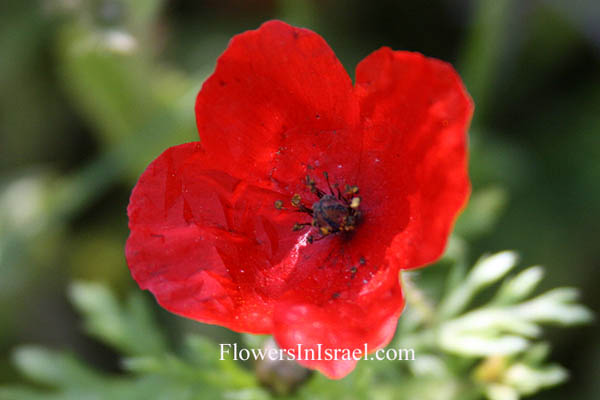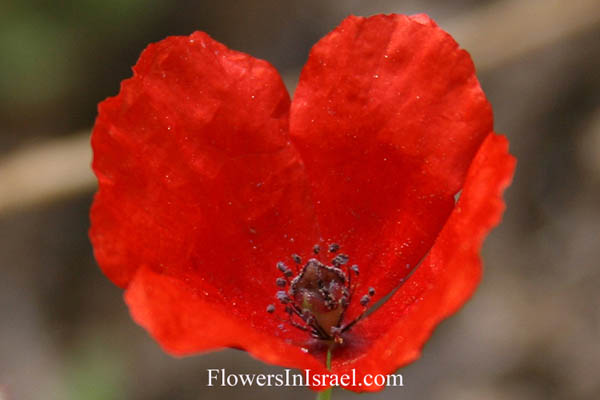Blackspot Hornpoppy,
Hebrew: פרגה מקרינה, Arabic: الماميثا المقرنة
| Scientific name: | Glaucium corniculatum (L.) J.H.Rudolph | |
| Synonym name: | Chelidonium corniculatum L. | |
| Common name: | Blackspot Hornpoppy | |
| Hebrew name: | פרגה מקרינה | |
| Arabic name: | الماميثا المقرنة | |
| Family: | Papaveraceae, פרגיים |

|
| Life form: | Annual | |
| Stems: | Up to 50 cm; erect, branching; stiff spreading hairs | |
| Leaves: | Alternate, rosette, dissected, dentate or serrate; hispid, glaucos | |
| Inflorescence: | Short flower stalks | |
| Flowers: | Sepals softly hairy; petals roundish, red with black spot at the base | |
| Fruits / pods: | Capsule hairy, hairs pressed to the pericarpium | |
| Flowering Period: | March, April, May | |
| Habitat: | Shrub-steppes | |
| Distribution: | Mediterranean Woodlands and Shrublands, Semi-steppe shrublands, Shrub-steppes, Deserts and extreme deserts | |
| Chorotype: | Med - Irano-Turanian | |
| Summer shedding: | Ephemeral |

Derivation of the botanical name: Glaucium , Horned poppy; sea poppy. From Greek glaukos, grayish-green; from the color of the leaves. corniculatum, corniculum, little horn; helmet ornament; horned. Chelidonium , Celandine. From the Greek chelidon, a swallow. The tradition is that the herb flowers when the swallows arrive.
|